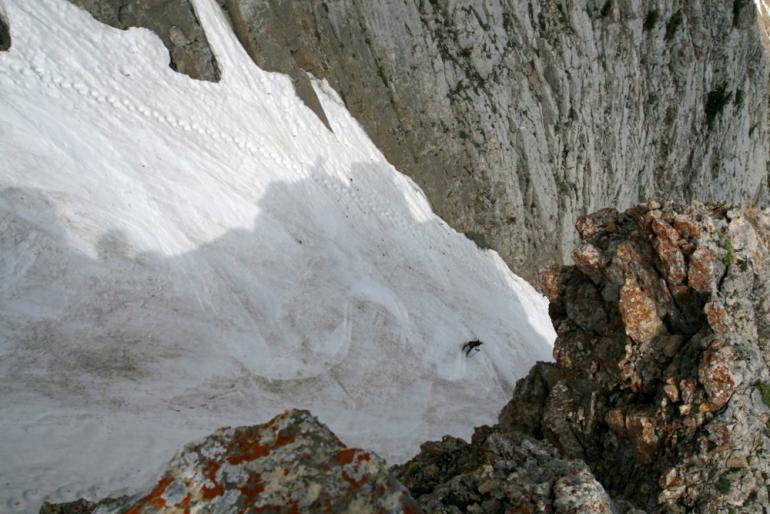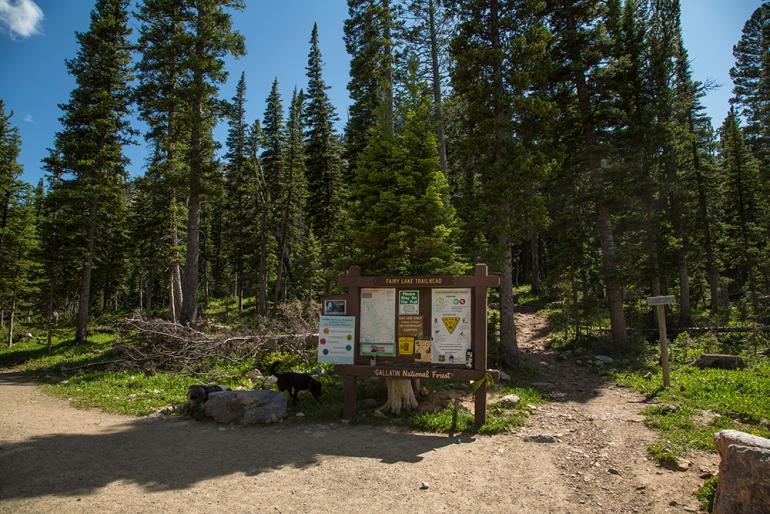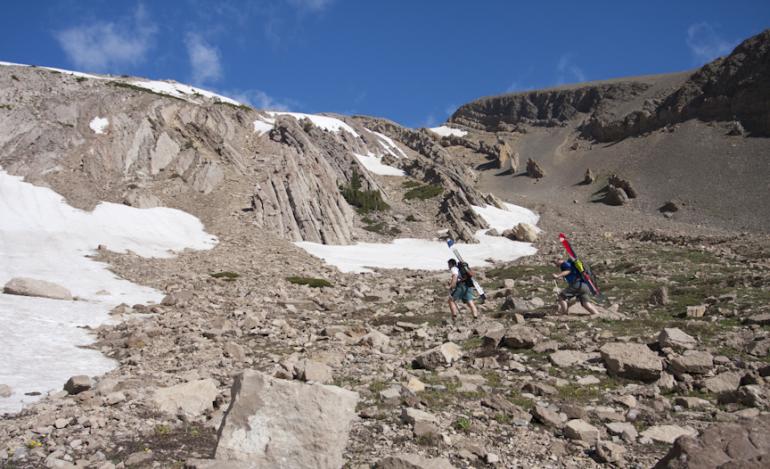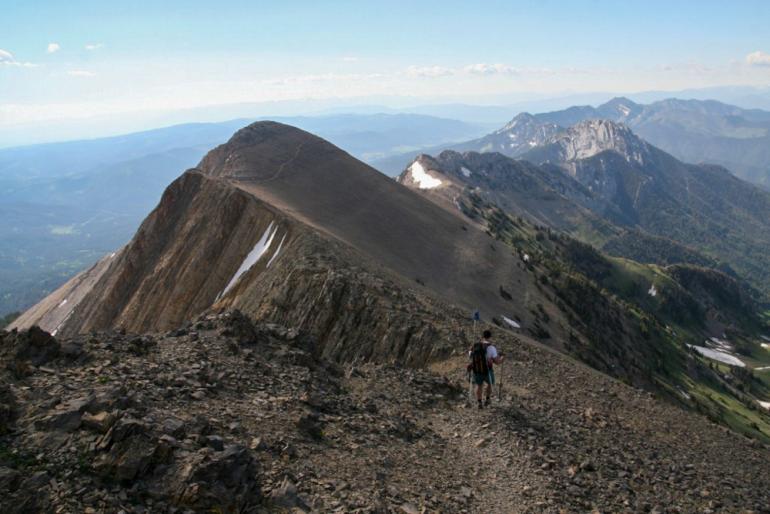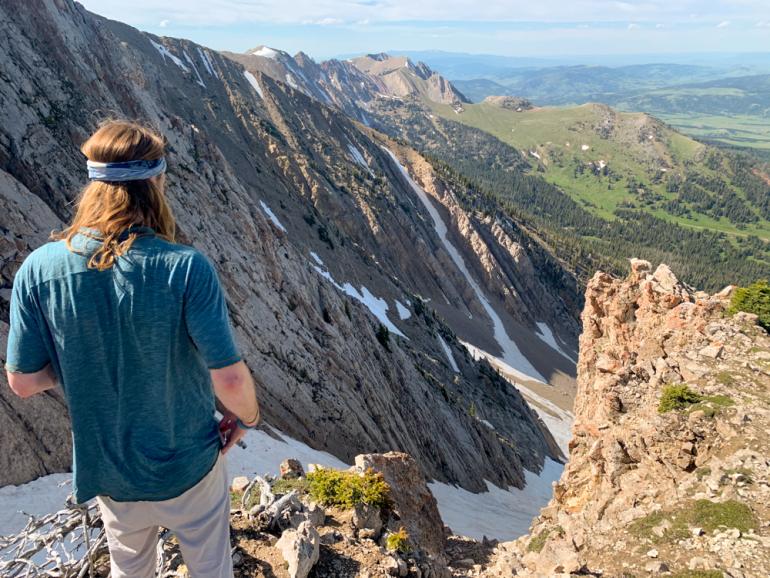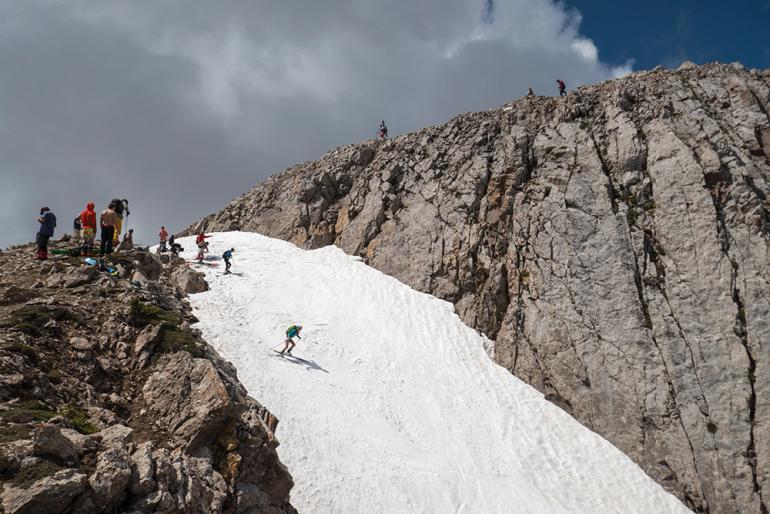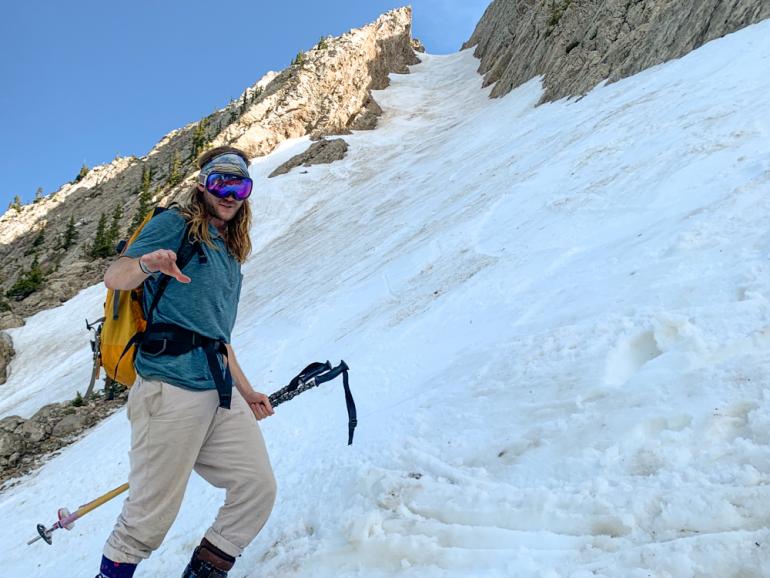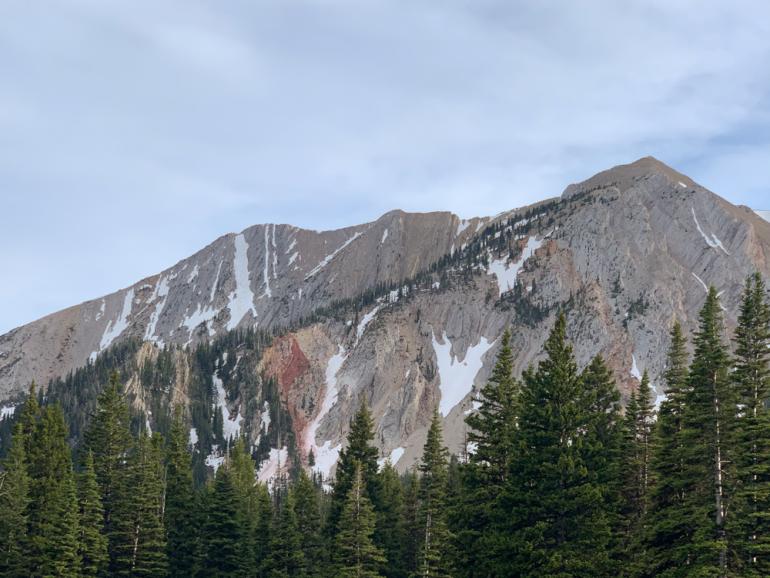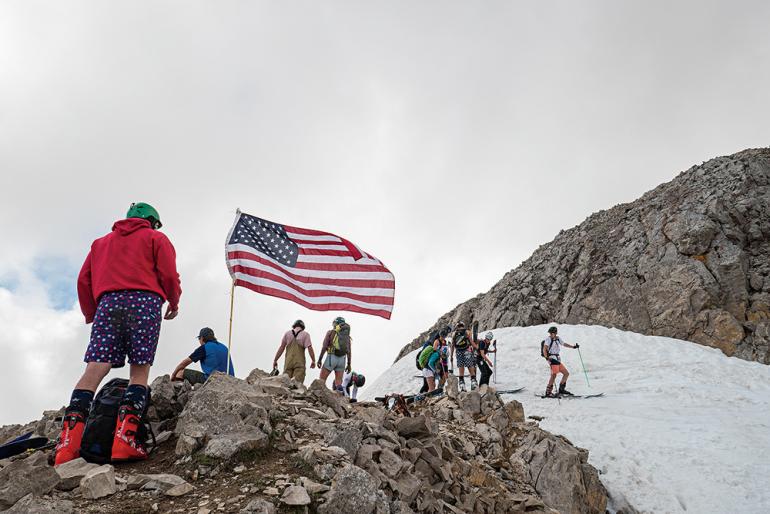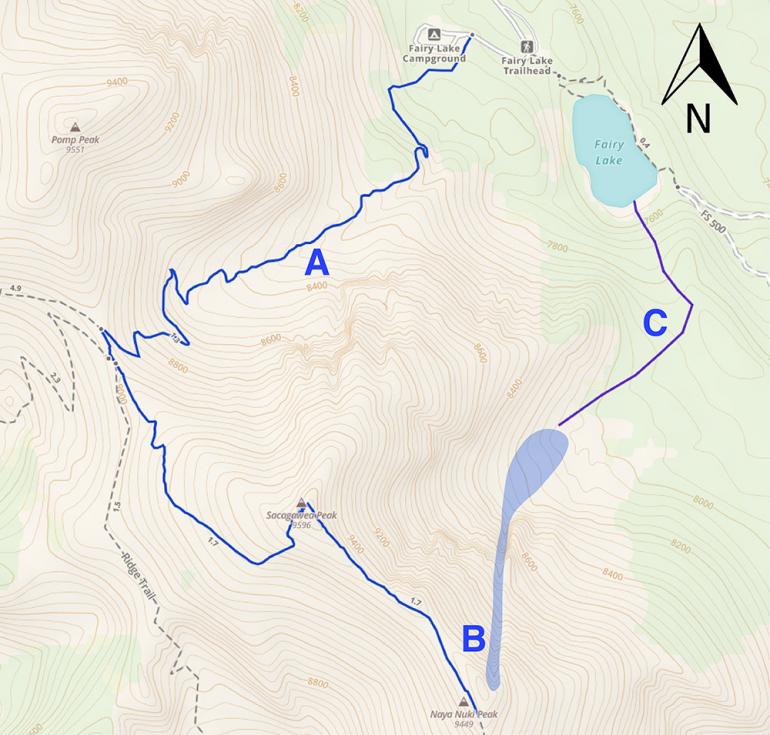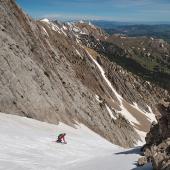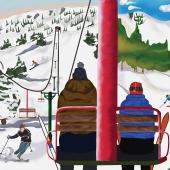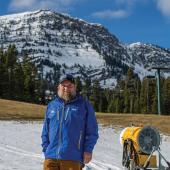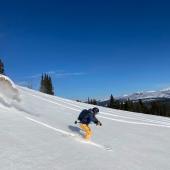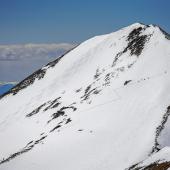Ski Tour: The Great One
Approach Distance: 2.5 miles
Approach Gain: 2,000 feet
Skiable Vertical: 1,500 feet
Duration: 4 to 6 hours
Distance from Bozeman: 1 hour
Avalanche Hazard*: High
Traffic: Moderate
Overview
For full-blown skiing addicts, the Great One provides a nearly year-round opportunity to make some turns in the beautiful northern Bridgers. This massive couloir slices straight as an arrow down the northeast face of Naya Nuki for over 1,000 vertical feet, and though its towering rock walls on either side obscure it from most viewing angles, it's impossible to miss from the upper road to Fairy Lake. This run has a reputation for casual summer skiing, and in good conditions, it lives up to that. However, the terrain is steep and extremely exposed, and an unarrested fall could have dire consequences. Make sure you're confident in your edge control for the given snow conditions before you drop in.
Curious why the northern Bridgers have so many steep couloirs? Read up on the geology here.
45.906856, -110.960248
Directions
Head out Bridger Canyon, up and over Battle Ridge Pass, and onto the bumpy, rutted Fairy Lake Rd. to the Fairy Lake parking area. A half-mile before the trailhead, you'll pass through a meadow with a full view of the Great One. Stop here to scout the snow coverage and get an idea of the walk-out, especially if you haven't been before.
Approach
From the Fairy Lake Trailhead, start up the Sacajawea Pass Trail through the forest and into the basin between Sacajawea and Pomp Peak (A). Continue towards the saddle, where a series of switchbacks leads you to Sacajawea Pass. Turn left onto the Bridger Ridge Trail past the summit of Sacajawea (or tag the summit with a very short detour), then continue on down the ridge to Naya Nuki, the last prominent summit before the trail starts descending steeply. Peer over the east edge of the ridge and voila, the Great One. Gaia route here.
Descent
Scramble down to snowline to don your skis. Assuming you're here in the summer, the snow should be slushy enough for good edge hold. If the snow is refrozen, or if the couloir is loaded with fresh snow, this descent could be very dangerous—don't be afraid to back out. The upper portion of the Great One (B) is straightforward; just stay between the walls and watch out for rocks that have fallen into the couloir. Once you've descended about 500 feet, the slope starts to fall away to the right. Stay high and left, aiming for the lower couloir, bounded on skier's right by a massive rock fin. You may need to take your skis off and walk across some scree to get into the lower couloir. From here, continue down into the basin below the east face of Sacajawea. Depending on snow coverage, you may be able to ski the bottom of the basin, and at the right time of year, you'll find an awesome pond skim just above treeline.
Walk-Out
The walk back to Fairy Lake Trailhead is not far, but the route is not well-marked and you might feel lost after you dip below treeline. You'll want to end up on the skier's-left side of the basin below Sacajawea. From here, head down into the forest and look for any signs of a trodden footpath. Resist the urge to maintain elevation by contouring leftwards—you're still a ways higher than Fairy Lake. Continue downhill until you reach a small drainage (C) trending left (north) to Fairy Lake. If you go too far, you'll hit a trail shortly after this where you can turn left toward Fairy Lake. From here, hike around either side of the lake and back to the trailhead—after a celebratory swim, of course.
Avalanche Safety
The Great One is commonly skied in the summer with a warm snowpack that is guarded from wet-avalanche risk by the couloir's shady exposure. That being said, this couloir is a massive avalanche path, and should be out of the question unless you are confident that the snowpack is stable. Also, beware if the snow is refrozen and icy—rocks and cliffs loom below that would be dangerous in an unarrested fall. Do your research before heading out, and know if you're dealing with an avalanche concern. Once on location, follow all accepted avy-safety precautions, including digging pits and avoiding questionable areas. Have a backup plan in case you encounter unexpected conditions. Ski one-at-a-time when descending through this exposed terrain, keeping eyes on your partner.
*Avalanche hazard refers to terrain risk only. Always travel with rescue gear, evaluate conditions carefully, and check the forecast before heading out.


